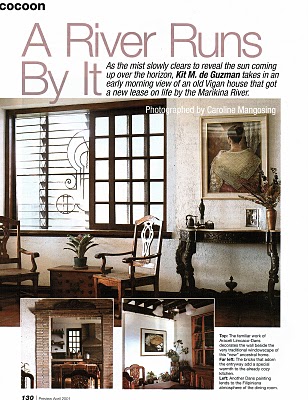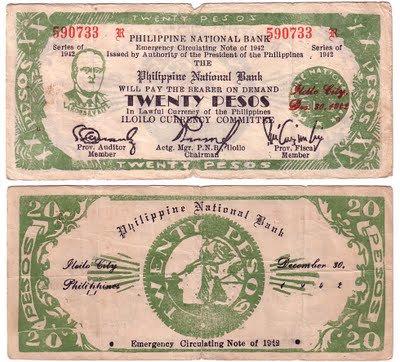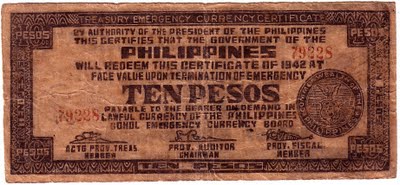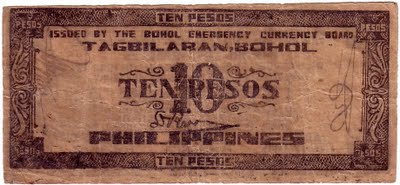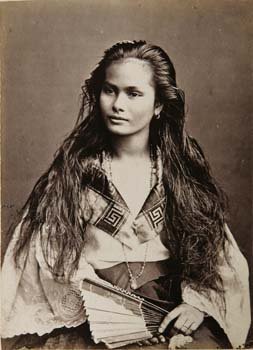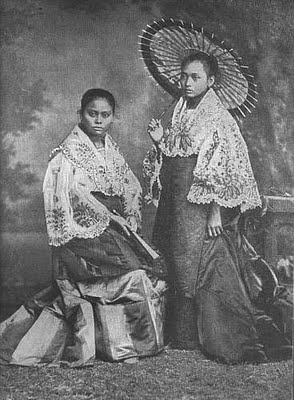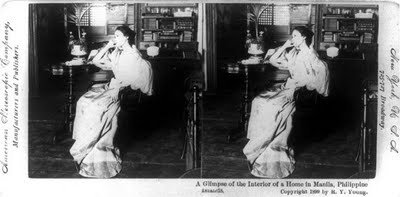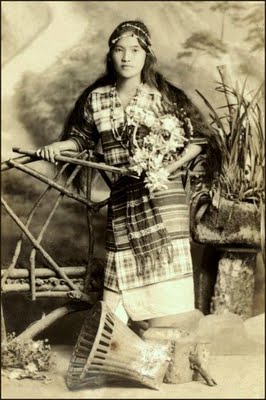My Aunt Rose moved back to the Manila from San Francisco after she married and had a couple of kids (back in the 90s). During a visit to her father's ancestral town of
Vigan, she had an idea – a monstrous undertaking only possible in places like the Philippines.
Vigan is a town well-known for it's Spanish colonial architecture. In fact, since the 18th and 19th century, it has retained the most of the colonial architecture of any city in the Philippines. It is gorgeous and quaint. And yes, people still use horse-drawn carriages in the Philippines (called
kalesa).
During my Tita Rose's visit to Vigan (tita means aunt in Tagalog), she heard about a house and land up for sale there. She heard the house was to be demolished. After going to see the house, she decided to purchase just the house and get this: took the house apart – every bit – and transported it back to Manila (I believe by truck, then boat) and rebuilt it next to a river outside of the city! It was a five plus year undertaking. One that that would have cost ridiculous amounts of money in any other country. You have to take into consideration that the Philippines is made up of over 7,000 islands. Transporting anything is an undertaking. The house was rebuilt on a plot of land overlooking a river. Various parts of the original house were repurposed as pieces of furniture (i.e. solid wood wall panels as the new dining table and front door, banisters as new bed posts, etc.). It's incredible.
So a few years ago, my sister
Caroline (among numerous other talents, is a photographer) photographed the house for a local magazine. The house is often rented out for film, television commercials and photo shoots. The other images below are ones I took during my last visit a couple of years ago. Please click to enlarge the images (they are huge).
My Tita Rose's house was an amazing feat. It was a project of a lifetime, an amazing contribution to cultural preservation. Her creativity and ingenuity are an inspiration. She's not even a trained designer – she is a social worker, counselor and unlike 95% of Filipinos, a devout Buddhist who often goes on silent meditation retreats for up to 60 days. That's right. Sixty. She has this tranquil intelligence about her and she's incredibly kind. I love that she had a rooster, dogs and a cat running around the house the day we were there for a visit!
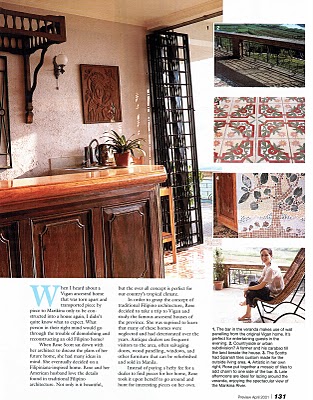

These are some examples of Vigan architecture.




I love the hammocks-turned-chairs

Capiz shell dividers and antique furniture






















